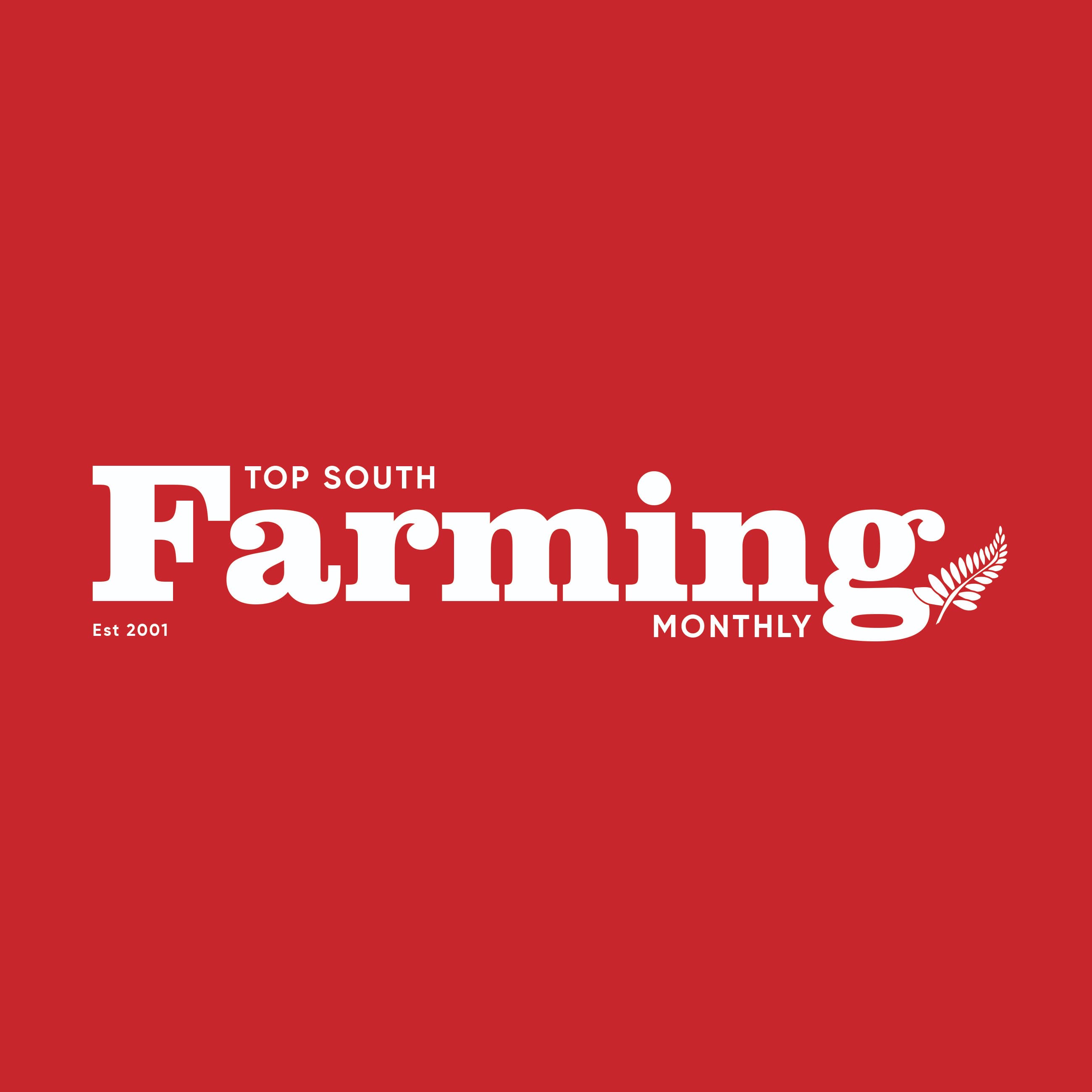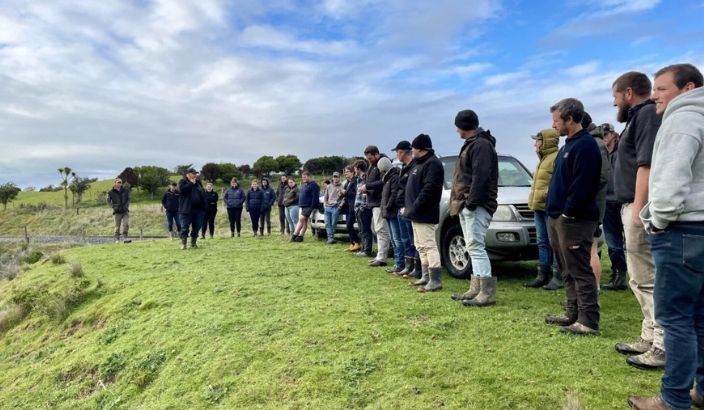In the land of grapes: Next gen 2025 heads to Marlborough


Justin Stevens, New Zealand Deer Farmers’ Association executive committee member, showed the group through his Marlborough farm with many discussions and questions. Photo: Supplied.
New Zealand Deer Farmers’ Association
When the NZDFA Executive Committee were planning Next Generation for 2025, it was assumed that Marlborough would be a pretty good guess for one of the South Island’s driest provinces. A late July atmospheric river had other ideas. Yet while the ground underfoot may have been a bit greasy, the days for the event were sunny, and the attendees were in good spirits.
Day 1 began at Wye Hills, owned by Jason Rentoul, with a presentation by Grace Boardman on the new DAGI (Drench and Grazing Integration) app, to be launched in spring 2025. While the app is currently targeted at sheep farmers, Grace said that deer were definitely being considered for the second phase and that DAGI would be keen to engage with deer farmers once the sheep launch had gone into market.
This was followed by an engaging discussion led by BNZ’s Matt Hood, where he positioned those looking to get into farm ownership as “solution providers” to those who might be looking to ease off or head into retirement.
Then it was on to Upper Avon Farms, owned by Darren Clifford. Bought ten years ago off some French winemakers who had used it as a weekend escape, the operation is primarily a trophy hunting business but also has a deer farming element to it. Darren gave a bit more of a rundown of the business, discussing the newly introduced hunting block, aimed at those who want a more challenging hunt, as well as his partnership with Picton deer farmer Andrew Fishburn, who supplies 2-year-old stags to Avon Valley, which are then velvetted for two years before going out to the hunting block. The day wrapped up back in Blenheim with a social dinner.
The next day , Executive Committee member Justin Stevens ran the group through some of the pitfalls of farming so close to town then led the group to a handful of sections of his farm, moving from overlooking a small basin, where discussion featured waterways and sediment traps, to a plot of vines and how he grazes fawns through them to promote vine health, to a drone demonstration by Jason Rentoul outside Justin’s deer shed, easily moving a mob of deer that had never seen a drone before. From Justin’s recycling sprayer used on the vines to the Gallagher TWR-5 Weigh Scale and Reader, to the use of drones for several farm activities, technology certainly featured as one of those common off-the-ball conversation themes throughout the two days.
The last stop was Ben Morven Farm, Marlborough DFA Branch Chair Geoff Hayes’ farm just outside of Blenheim. As a bit of a running theme, the previous night’s rain meant the field demonstration by Marlborough District Council freshwater scientist India Hamill could not be done in any of the farm’s waterways and so shifted inside the woolshed for a more theory-based presentation. India’s presentation highlighted the many ways a waterway’s ecosystem can break down, as well as the key takeaway that is: ‘If all you have in your waterway are worms and snails, the water quality is poor; if you have any macroinvertebrates at all – such as mayflies, stoneflies, caddisflies and crayfish/koura – then the water quality is generally pretty good.’

Geoff led a Q&A session covering a number of aspects of the farm, from riparian and native planting done in recent years, to tick management, to how he grazes deer among the vines after harvest. Finally, we took a drive up to look at Geoff’s paddock of Raphno, where both Geoff and Jason Rentoul spoke of their experiences with the fodder crop.
A big thanks to the Marlborough branch of the NZDFA and our host farmers for their hospitality and for opening their farms to us, to all of our sponsors for their support, and to all the attendees for taking the time to make the event what it is.

